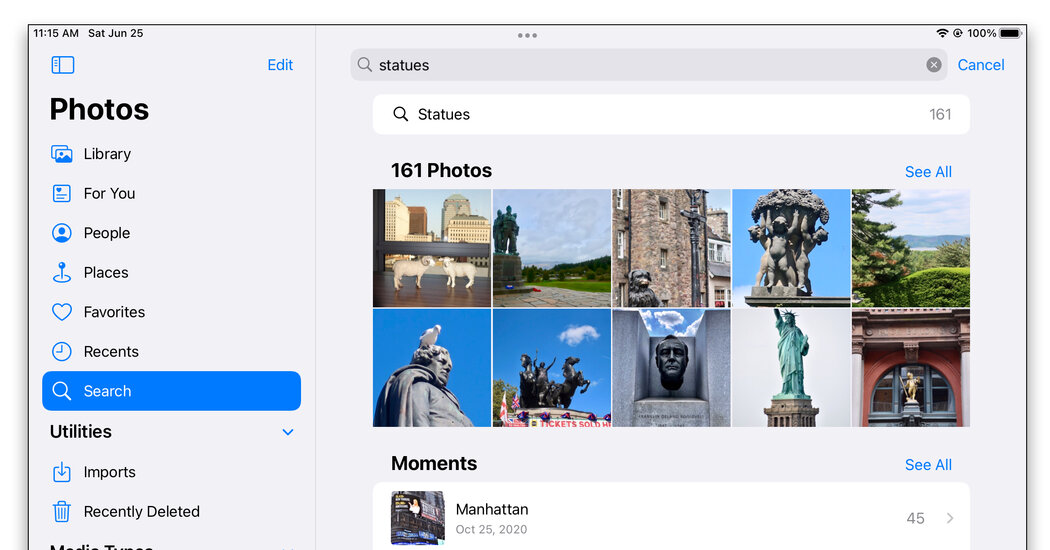Virtual assistants are usually in the spotlight when it comes to artificial intelligence software on smartphones and tablets. But Apple’s Siri, Google Assistant, Samsung’s Bixby and the company aren’t the only tools using machine learning to make life easier — other common programs use the technology too. Here’s a quick tour of some common AI-powered apps and how to manage them.
Device Security
When you set up a new device, you are usually invited to enroll in the facial recognition security program, which captures and analyzes your image so that the program recognizes you in different looks and lighting situations. Later, when you want to unlock the device or use apps such as digital payment systems, the camera confirms that your face matches the saved data, so you can continue.
If you decide to use the feature, check your device maker’s privacy policy to see where that data is stored. For example, Apple states that “Face ID data doesn’t leave your device,” and Google says it stores facial data on the security chips on its Pixel phones. If you sign in and then change your mind, you can always go into your phone’s Face ID or Face Unlock settings, delete or reset the data, disable the feature, and use a passcode.
writing tools
If you’ve ever typed on your phone’s keyboard and seen suggested words for what to type next, that’s machine learning in action. Apple’s iOS software includes a predictive text feature that bases its suggestions on your past conversations, Safari browser searches, and other resources.
Google’s Gboard keyboard for Android and iOS can provide word suggestions, and Google has a Smart Compose tool for Gmail and other text input apps that uses personal information collected in your Google account to adjust word predictions. Samsung has its own predictive text software for its Galaxy devices.
The suggestions can save you time, and Apple and Google both maintain that the custom predictions based on your personal information remain private. But if you want fewer algorithms in your business, turn it off. On an iPhone (or iPad), you can turn off Predictive Text in the keyboard settings.
Augmented Reality Apps
Google Lens (for Android and iOS) and Apple’s Live Text feature use artificial intelligence to analyze the text in images for automatic translation and can perform other useful tasks, such as Apple’s “visual lookup.” Google Lens can identify plants, animals, and products seen by the phone’s camera and save those searches. You can delete the information or disable data collection in the Web & App Activity settings in your Google Account.
In iOS 15, you can turn off Live Text by opening the Settings app, tapping General, then Language & Region, and turning off the Live Text button. Later this year, Live Text will get an upgrade in iOS 16, with Apple emphasizing the role of “on-device intelligence” in getting the job done.
Virtual Assistants
These AI-in-action tools are most useful when they have access to personal information such as your address and contacts. If you’re concerned, read your phone manufacturer’s privacy policy: Apple, Google, and Samsung have all posted documents to their sites. The nonprofit Common Sense Media has posted independent privacy reviews for Siri, Google Assistant, and Bixby.
Setting up the software is easy as the assistant guides you, but check out the app’s own settings to adjust it. And don’t forget the general privacy controls built into your phone’s operating system.

